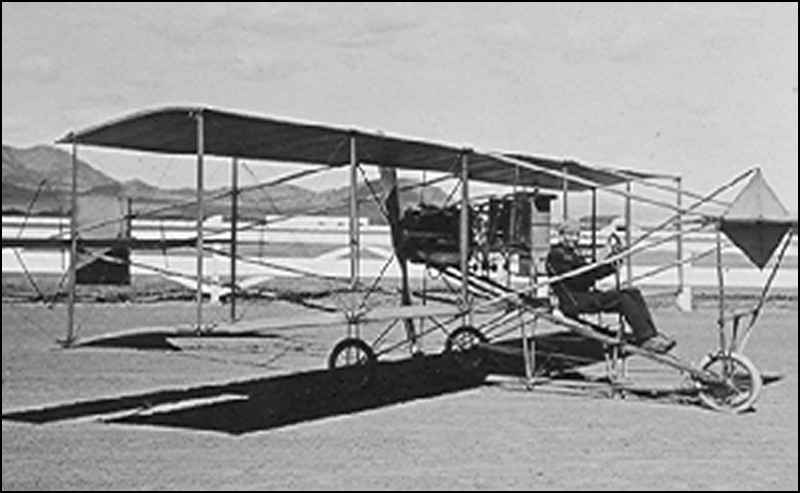
|
4 Thursday, Jan. 27, 2011
COMMUNITY
Smith County Pioneer
Cromwell
Continued from Page 3 |
 |
|
of that place who certainly caused the death of the aviator. J. J. Frisbie the week before. In discussion of the
matter, he said the disappointment to the people was truly aggravating, due to the delay in the arrival of the
machine and the further fact that everything was against a successful manipulation of it. He believed the crowd
should have believed him when he esplained it all, but that they were not to blame so much for the impatience.
The Curtiss firm did not receive a cent from the work done at Norton and the fair association, that place
presented to the widow of Mr. Frisbie with $500 as his share of the loss. The Curtiss exhibition is made up of
four people - Mr. J. W. Scott, general manager, Cromwell Dixon, the aviator and a gas engine expert and also
one expert machinist. After each flight the engine and working parts of the aeroplane are gone over carefully.
The eight cylinder gasoline engine weighs 285 pounds and easily develops 60 horse power. It is similar to the
ordinary engine, except that the extra precaution is taken regarding the sparkers. It is provided with a double
set of independent batteries, but even though the engine should stop working if at an elevation of 300 feet or
more, there would be no danger in making a perfect landing through the control of the machine by the planes. The aviator furnished entertainment for the crowd. He made ten flights as his contract called for only nine, everybody was satisfied. His longest flight was made to the north, where he said he was over a small village, presumably |
Thornburg.
His machine was covered with the names of people from various places where he had given exhibitions, but so far as was
noticed, only two of our citizens found room to place their names on the canvas wings of his biplane. The people who attended went home this time with good a feeling toward the fair and Smith Center and much credit is due to the present officers of the association. There is one peculiar thing about a crowd witnessing the performance of a flying machine. There is so much interest that enthusiasm does not take the form of yelling, people simply stand and look with their mouths open from the moment the motor starts the machine to running along the ground till the flyer becomes tired of the novelty of the thing and picks out a suitable place for lighting. Dixon does not miss the spot, he selects a dozen feet. Dixon gave the people a chance to go through some of the real performances in air Tuesday evening. He started for the south when he elevated his machine some 700 feet and drove straight about four miles when he made a short run, and headed for the northwest, elevating the machine as he came. When almost over the ground he shifted the plane and made a drop that caused the spectators to hold their breaths. When about 50 feet from the ground he took a glide just as a large bird would make when it had changed its mind about lighting. Then he elevated himself several hundred feet again and flew over the north part of town, circled back over the air ground and gently settled down on |
the spot where he wished to stop. It was a wonderful exhibition and mighty
interesting and thrilling for the spectators. The first trip on Thursday the airship left the ground going to the southwest and was down over the Munsinger school house, one mile west and 1 1/2 miles south of town. The second trip, it left the grounds and went south and a little to the west for a few miles when it made a turn, coming back over the fairgrounds and was headed almost due north a distance of seven or eight miles when it turned west, returning to the fairgrounds from the northwest. The indicator in the machine showed the distance traveled of 22 miles in this one trip in 21 minutes. The third trip it left the grounds headed for the northeast, landing in an alfalfa field. It started up again making a circle to the west and south and back to the grounds. The stables and stock barns are located northeast of the amphitheater. From the best information we can obtain, Aviator Dixon gets $125 a day for the three flights when he goes up the distance called for in the contract. The Curtiss Company, which employs him, received $1,500 for the three days here. A manager and two machinists go with their aviator. JOURNAL NEWS
In the Smith County Journal, Sept. 19 issue an article ran, "Said a prominent
Smith Center lady to one of her neighbors yesterday, 'Isn't it dreadful to have company during the fair? I just have
to hurry all forenoon to get my morning's Continued on page 5 |


 PAGE 5 PAGE 5
|